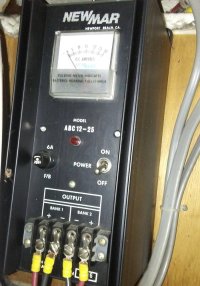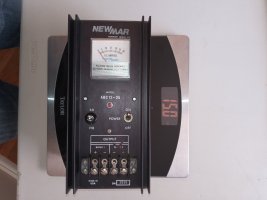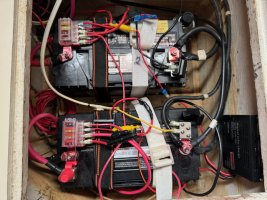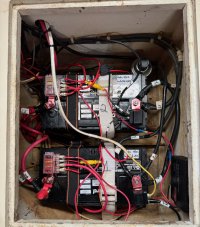Kinda late to the party here, but I just got discharged from the hospital after a major surgery on Wednesday. I've been following this particular thread with interest (from my hospital bed) because I just recently installed a new Sterling 30A charger and wanted to weigh in with a few thoughts. But typing on an iPhone is purgatory, so I figured I'd hold off until I got back to a computer.
First, I highly recommend
this article by MaineSail that's full of good information on chargers, battery charging protocols, and so forth.
One of the (several) main takeaways from this article is that a key to charging batteries properly is to select the correct voltages for the absorption and float stages. And the best way to do that is: (1) to find out the correct voltages from the battery manufacturer, as this can and does vary from battery to battery, even for the same battery type; and (2) to use a charger that lets you set these manually in case one of the charger's presets does not exactly fit the bill. (Alternatively, I suppose you could always buy your batteries around what presets your charger furnishes.)
The flip side of the above advice is that selecting a charging protocol based on, e.g., pre-defined dipswitch settings frequently will not yield the result you want. He stresses repeatedly that you want to set your charger based on the required
voltages and not whatever
labels your charger may give to any particular setting. So, for example, if your charger had an AGM setting that happened to correspond to the voltages that your particular flooded battery wanted to see, you'd select it regardless of the label not matching.
My flooded Group 24s, now and in the past, were not giving me good service, being chronically undercharged by my wimpy little Guest charger. I just installed the Sterling ProCharge Ultra 1230--plenty of charger for my needs. This charger is highly recommended in MaineSail's article, and I especially liked the fact that I could dial in the exact voltages I wanted if none of the presets sufficed. I also liked that it has a setting to desulphate the batteries. My particular 3 year-old batteries were not in great shape due to the chronic undercharging, but I thought that by equalizing them I might be able to breathe a bit of life back into them and nurse them along for a little while longer before replacement. Then, with a fresh set of batteries, the new charger should maintain them properly moving forward. Or so I hope.
My batteries are from Sam's Club and are 75 Ah Group 24 deep cycle Marine batteries. I have two of them, jumpered to be in parallel and present as one larger battery. They are branded as Duracell but are manufactured by East Penn. I contacted East Penn and they sent me the data sheet that gives the charging parameters, which I've attached. Again, the numbers I am after are for the absorption and float stages. These are expressed as a range. So for the absorption stage I can set the charger between 14.4 and 14.7V, while the float charge for these batteries can be set from 13.8 to 14.1V. After contacting Sterling tech support to get their take on it, we settled on an absorption setting of 14.6 and a float of 13.8. Note that the charger's temperature compensation will bump these numbers up or down a bit depending on the battery temperature, but these are the baseline numbers.
Since none of the presets exactly matched these numbers, I simply dialed them in using a custom profile.
After installing the charger I ran one desulphation cycle on these batteries. I then let the charger maintain them according to my custom profile.
It's a bit hard to say whether this charger will breath some new life back into these abused batteries, especially since I don't have any battery monitor to measure the capacity with any real precision. I did spend two days on the boat with the charger turned off and running normal house loads to see how the batteries were performing. Roughly speaking, they seemed to be holding a better charge than before. This was based on running what I usually run: lights, laptop, iPad, CPAP machine at night, and so forth. But as I say, I really can't quantify it with any precision.
I'm planning to swap out these batteries in the next few months in any event, most likely with a couple of new Duracells also from Sam's. The real test will be how these new batteries hold up with the new charger.







